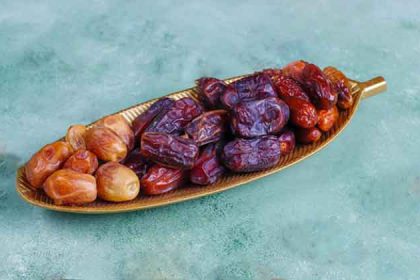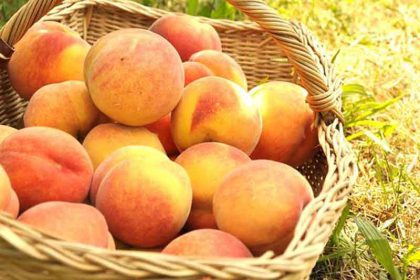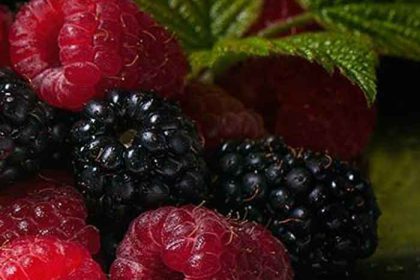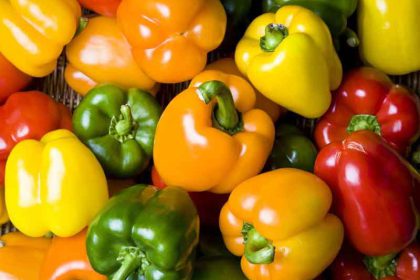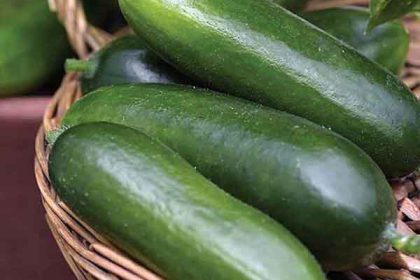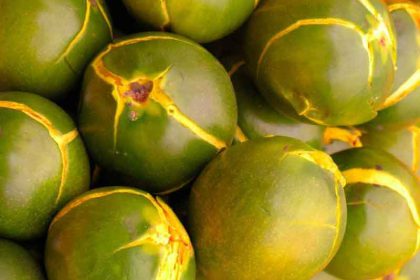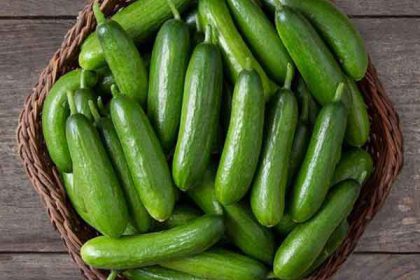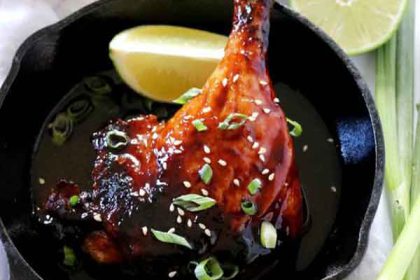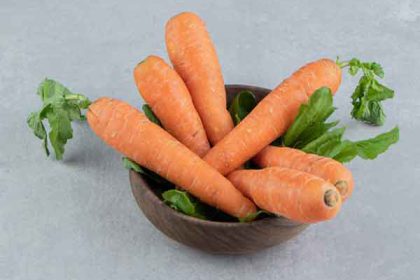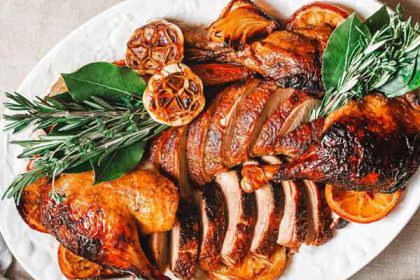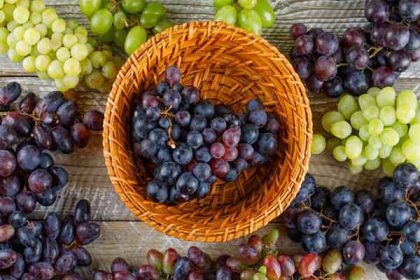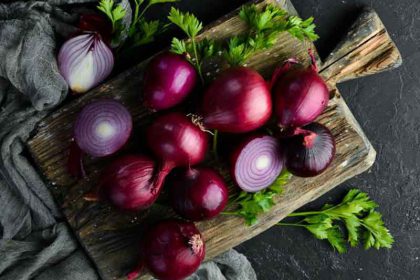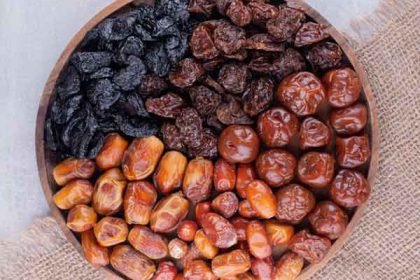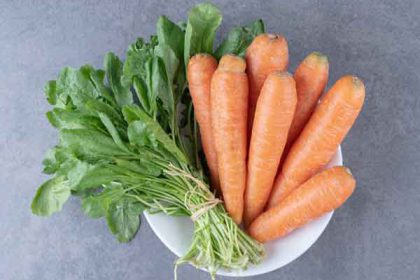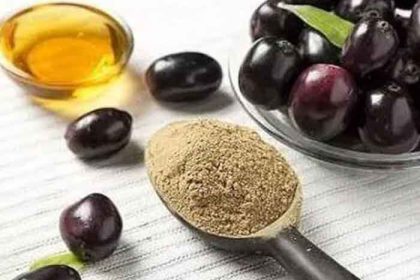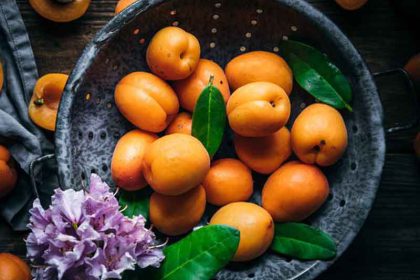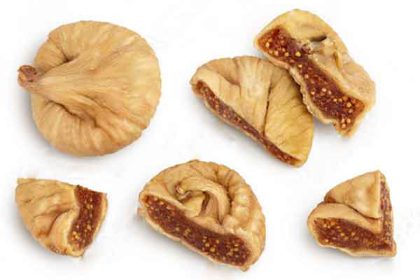Rhubarb benefits for weight loss and diabetics and arthritis and kidneys
Benefits of Rhubarb
Rhubarb benefits for weight loss and diabetics and arthritis and kidneys on Nicholi site. We hope this article will be of interest to you.
Benefits of Rhubarb
Rich in Nutrients: Rhubarb is a good source of vitamins (such as vitamin C, and vitamin K) and minerals (including calcium, potassium, and manganese). These nutrients are essential for overall health and well-being.
Digestive Health: Rhubarb contains dietary fiber, which can aid digestion and promote regular bowel movements. It is often used as a natural remedy for constipation.
Antioxidant Properties: Rhubarb contains antioxidants, such as anthocyanins and quercetin, which help neutralize harmful free radicals and protect the body from oxidative stress.
Potential Anti-Inflammatory Effects: Some compounds in rhubarb, like anthraquinones, have anti-inflammatory properties that may help reduce inflammation in the body.
Heart Health: Rhubarb may have potential benefits for heart health by helping to reduce cholesterol levels and supporting cardiovascular function. However, more research is needed in this area.
Blood Sugar Control: While rhubarb is not particularly high in sugar, it does contain carbohydrates. In some studies, certain compounds in rhubarb have shown potential in improving blood sugar levels. However, caution should be exercised for those with diabetes, and moderation is key.
Rhubarb side effects
While rhubarb is generally safe for most people when consumed in moderate amounts, there are some potential side effects and considerations to be aware of:
Oxalic Acid: Rhubarb contains oxalic acid, which can bind with calcium and lead to the formation of kidney stones in susceptible individuals. The highest concentration of oxalic acid is found in rhubarb leaves, so it’s crucial never to consume them. Only the edible stalks should be consumed.
Gastrointestinal Issues: Eating large quantities of rhubarb or consuming it in concentrated forms (such as supplements) can cause digestive discomfort, including diarrhea or stomach cramps, due to its high fiber content. If you’re not used to consuming fiber-rich foods, introduce rhubarb gradually into your diet to allow your body to adjust.
Interactions with Medications: Rhubarb may interfere with the absorption of certain medications. If you are taking medications, especially those related to heart health, blood pressure, or kidney function, consult your healthcare provider before consuming rhubarb regularly.
Pregnancy and Breastfeeding: Pregnant and breastfeeding women should avoid consuming rhubarb in large amounts due to the potential risks associated with the oxalic acid content and its laxative effects.
Allergic Reactions: Although rare, some individuals may be allergic to rhubarb. If you experience any signs of an allergic reaction, such as itching, swelling, or difficulty breathing, seek medical attention immediately.
Blood Sugar Levels: Rhubarb is relatively low in natural sugars, but it does contain carbohydrates. If you have diabetes or need to manage blood sugar levels, monitor your intake of rhubarb and consider using sugar substitutes when cooking or preparing rhubarb dishes.
As with any food or herbal remedy, moderation is key. If you have any underlying health conditions or concerns, it’s always a good idea to consult with a healthcare professional or registered dietitian before adding rhubarb to your diet or using it for medicinal purposes.
How to cook rhubarb for diabetics?
Cooking rhubarb for diabetics can be a great way to enjoy this tart vegetable while managing blood sugar levels. Here’s a simple recipe for stewed rhubarb, which is a popular way to prepare it:
Ingredients:
2 cups of fresh rhubarb, washed and chopped into 1-inch pieces
1/4 cup of water
1-2 tablespoons of a sugar substitute (e.g., stevia, erythritol, or monk fruit sweetener) or an amount suitable for your dietary needs and taste preference
1 teaspoon of vanilla extract (optional)
Instructions:
Prepare the rhubarb: Wash the rhubarb stalks thoroughly and remove any leaves (as they are toxic). Cut the rhubarb into 1-inch pieces, discarding any tough or woody ends.
Stew the rhubarb: In a medium-sized saucepan, add the chopped rhubarb and water. Cook over low to medium heat, stirring occasionally, until the rhubarb starts to break down and becomes soft. This should take about 10-15 minutes.
Sweeten the rhubarb: Add your preferred sugar substitute to the stewed rhubarb, adjusting the amount according to your taste and dietary requirements. Remember, sugar substitutes vary in sweetness, so start with a small amount and add more if needed. If you enjoy the flavor of vanilla, you can also add a teaspoon of vanilla extract at this stage.
Continue cooking: Stir the sweetener and optional vanilla extract into the stewed rhubarb. Cook for an additional 5-10 minutes until the rhubarb is completely tender and the mixture has thickened slightly.
Taste and adjust: Taste the stewed rhubarb to ensure it is sweet enough for your liking. If needed, you can add more sugar substitutes or a few drops of liquid stevia until it reaches your desired sweetness.
Serve or store: Once the rhubarb has reached the desired sweetness and texture, remove the saucepan from the heat. You can serve it warm or chilled as a dessert or topping. Stewed rhubarb goes well with yogurt, and oatmeal, or can be used as a filling for pies or crumbles.
Remember to enjoy rhubarb in moderation as part of a balanced diabetic-friendly diet. While rhubarb is low in calories and carbohydrates, it’s essential to consider your overall carbohydrate intake and monitor your blood sugar levels after eating to understand how it affects you personally. Always consult with a healthcare professional or registered dietitian for personalized dietary advice for diabetes management.
Rhubarb crumble for diabetics
Absolutely! Rhubarb crumble can be adapted to suit a diabetic-friendly diet by using sugar substitutes and healthier alternatives for the crumble topping. Here’s a recipe for a delicious rhubarb crumble suitable for diabetics:
Ingredients:
For the filling:
4 cups of fresh rhubarb, washed and chopped into 1-inch pieces
1/4 cup water
2-3 tablespoons of a sugar substitute (e.g., stevia, erythritol, or monk fruit sweetener) or an amount suitable for your dietary needs and taste preference
1 teaspoon of vanilla extract (optional)
For the crumble topping:
1 cup almond flour (or other nut flour)
1/2 cup rolled oats (choose certified gluten-free oats if needed)
2-3 tablespoons of a sugar substitute (e.g., stevia, erythritol, or monk fruit sweetener)
1/4 cup melted unsalted butter or coconut oil
Instructions:
Prepare the rhubarb filling: Wash the rhubarb stalks thoroughly and cut them into 1-inch pieces. In a medium-sized saucepan, add the chopped rhubarb and water. Cook over low to medium heat, stirring occasionally, until the rhubarb starts to break down and becomes soft. This should take about 10-15 minutes.
Sweeten the rhubarb: Add your preferred sugar substitute to the stewed rhubarb, adjusting the amount according to your taste and dietary requirements. If you enjoy the flavor of vanilla, you can also add a teaspoon of vanilla extract at this stage.
Make the crumble topping: In a bowl, combine the almond flour, rolled oats, and sugar substitute. Mix well. Add the melted unsalted butter or coconut oil and mix until the mixture resembles coarse crumbs.
Assemble the crumble: Preheat your oven to 350°F (175°C). Transfer the sweetened rhubarb filling into an ovenproof dish. Sprinkle the crumble topping evenly over the rhubarb.
Bake the crumble: Place the dish in the preheated oven and bake for about 25-30 minutes or until the crumble topping turns golden brown and the filling is bubbling.
Serve: Remove the rhubarb crumble from the oven and let it cool for a few minutes before serving. You can enjoy it on its own or with a scoop of sugar-free ice cream or a dollop of plain Greek yogurt.
This diabetic-friendly rhubarb crumble is lower in carbohydrates and uses sugar substitutes to help manage blood sugar levels. However, individual responses to different sugar substitutes can vary, so it’s essential to monitor your blood sugar levels after consuming the crumble. As always, consult with a healthcare professional or registered dietitian for personalized dietary advice for diabetes management.
Is rhubarb good for you?
Yes, rhubarb can be good for you when consumed as part of a balanced diet. Rhubarb is a unique vegetable with a tart flavor, and it offers several nutritional benefits:
Low in Calories: Rhubarb is naturally low in calories, making it a great addition to your diet if you’re trying to manage your weight.
High in Fiber: Rhubarb is a good source of dietary fiber, which is beneficial for digestive health. Fiber can help promote regular bowel movements, support gut health, and may aid in controlling blood sugar levels.
Rich in Vitamins: Rhubarb contains essential vitamins, including vitamin C, vitamin K, and some B-vitamins. Vitamin C is an antioxidant that supports the immune system and skin health, while vitamin K is important for blood clotting and bone health.
Contains Minerals: Rhubarb provides minerals like calcium, potassium, and manganese. Potassium is essential for heart health and maintaining proper fluid balance, while calcium and manganese support bone health.
Antioxidants: Rhubarb contains various antioxidants, including anthocyanins and quercetin. These compounds have potential health benefits, such as reducing inflammation and combating oxidative stress in the body.
While rhubarb is nutritious, it’s essential to note that the leaves of the rhubarb plant contain oxalic acid, which is toxic and can cause health issues if ingested in large amounts. Therefore, only the stalks should be consumed, and the leaves must be discarded.
As with any food, moderation is key. If you have specific health conditions, such as kidney stones or certain gastrointestinal issues, you should consult with a healthcare professional or registered dietitian before adding rhubarb to your diet.
Also, if you have diabetes or need to manage blood sugar levels, keep in mind that rhubarb, though relatively low in natural sugars, can still impact blood sugar. Adjust your overall carbohydrate intake and monitor your blood sugar levels accordingly. Consider using sugar substitutes to sweeten rhubarb dishes, as mentioned in the previous recipe, to make them more diabetic-friendly.
How to eat rhubarb for constipation?
Rhubarb can be used as a natural remedy for constipation due to its high fiber content. Fiber helps add bulk to stool and promotes regular bowel movements. To use rhubarb for constipation relief, consider the following methods:
Stewed Rhubarb: Stewing rhubarb softens it and makes it easier to digest. Follow the recipe for stewed rhubarb provided earlier, and enjoy it as a delicious and constipation-relieving dessert or topping.
Rhubarb Compote: Similar to stewed rhubarb, you can make a rhubarb compote by gently cooking rhubarb with a little water and your preferred sugar substitute until it softens. The compote can be eaten on its own or added to yogurt, oatmeal, or other dishes.
Rhubarb Smoothie: Blend stewed or cooked rhubarb with other fiber-rich fruits like apples, pears, or berries to create a fiber-packed smoothie that can help promote bowel movements.
Rhubarb Fiber Supplement: If you prefer a more concentrated form of rhubarb fiber, you can find rhubarb supplements or powdered rhubarb fiber. Always consult with a healthcare professional before using any supplements, especially if you’re taking other medications or have underlying health conditions.
Incorporate Rhubarb in Salads: Raw rhubarb can be thinly sliced and added to salads for a crunchy texture and a fiber boost.
Remember to drink plenty of water when increasing your fiber intake, as this helps prevent any potential constipation from too much fiber. Gradually introduce rhubarb into your diet to avoid any digestive discomfort. Additionally, if you have a history of kidney stones or certain gastrointestinal issues, consult with a healthcare professional before using rhubarb as a remedy for constipation.
Sugar-free rhubarb recipes
Here are some delicious sugar-free rhubarb recipes that you can enjoy:
Sugar-Free Rhubarb Crisp:
Ingredients:
4 cups fresh rhubarb, washed and chopped into 1-inch pieces
1/4 cup water
2-3 tablespoons of a sugar substitute (e.g., stevia, erythritol, or monk fruit sweetener) or an amount suitable for your taste
1 teaspoon vanilla extract (optional)
For the crisp topping:
1 cup almond flour
1/2 cup rolled oats (choose certified gluten-free oats if needed)
2-3 tablespoons of a sugar substitute
1/4 cup melted unsalted butter or coconut oil
Instructions: Follow the instructions provided earlier in the “rhubarb crumble for diabetics” recipe, omitting any added sugar and using sugar substitutes instead.
Sugar-Free Rhubarb Sauce:
Ingredients:
2 cups fresh rhubarb, washed and chopped into 1-inch pieces
1/4 cup water
2-3 tablespoons of a sugar substitute (e.g., stevia, erythritol, or monk fruit sweetener) or an amount suitable for your taste
1 teaspoon vanilla extract (optional)
Instructions: Follow the instructions for preparing stewed rhubarb provided earlier, omitting any added sugar and using sugar substitutes instead. Once the rhubarb is cooked, you can blend it until smooth for a velvety rhubarb sauce. This sauce can be used as a topping for pancakes, waffles, or yogurt, or you can drizzle it over desserts.
Sugar-Free Rhubarb Muffins:
Ingredients:
2 cups almond flour
1/4 cup coconut flour
1 teaspoon baking powder
1/2 teaspoon baking soda
1/4 teaspoon salt
1/2 cup unsweetened applesauce
1/4 cup almond milk (or any non-dairy milk)
2 large eggs
2 teaspoons vanilla extract
2 cups fresh rhubarb, washed and chopped into small pieces
2-3 tablespoons of a sugar substitute (e.g., stevia, erythritol, or monk fruit sweetener) or an amount suitable for your taste
Instructions:
Preheat your oven to 350°F (175°C) and line a muffin tin with paper liners.
In a large bowl, mix the almond flour, coconut flour, baking powder, baking soda, and salt.
In a separate bowl, whisk together the applesauce, almond milk, eggs, vanilla extract, and sugar substitute.
Combine the wet and dry ingredients and stir until well combined.
Gently fold in the chopped rhubarb.
Spoon the batter into the prepared muffin tin, filling each cup about 3/4 full.
Bake for 18-20 minutes or until a toothpick inserted into the center of a muffin comes out clean.
Let the muffins cool in the pan for a few minutes before transferring them to a wire rack to cool completely.
These sugar-free rhubarb recipes are perfect for those looking to reduce their sugar intake while still enjoying the tart and tasty flavors of rhubarb. As with any sugar substitutes, adjust the amount to your taste preference and dietary needs.
Is rhubarb high in sugar?
No, rhubarb is not high in sugar. In fact, rhubarb is known for its tart flavor, which comes from natural acids, particularly oxalic acid. The edible stalks of rhubarb are relatively low in natural sugars and carbohydrates, making it a suitable option for people who need to manage their sugar intake or are following a low-sugar diet.
While the sweetness of rhubarb can vary slightly depending on the variety and its maturity, it is generally not considered a sweet vegetable. However, when preparing rhubarb dishes, some recipes call for adding sugar or sweeteners to balance the tartness and enhance the overall taste.
If you are looking for a low-sugar option for desserts or dishes, using sugar substitutes like stevia, erythritol, or monk fruit sweetener can help maintain the sweetness without adding extra sugar and calories. This is especially beneficial for those with diabetes or those who want to reduce their sugar intake while still enjoying the unique flavor of rhubarb.
Rhubarb medicinal uses
Rhubarb (Rheum rhabarbarum) has a long history of medicinal uses in traditional medicine. The medicinal properties of rhubarb primarily come from its active compounds, including anthraquinones and tannins. However, it’s essential to note that the therapeutic use of rhubarb should be approached with caution, and consulting a healthcare professional or herbalist is recommended before using it for medicinal purposes. Some traditional medicinal uses of rhubarb include:
Digestive Aid: Rhubarb has been used as a natural laxative for centuries. Its compounds, particularly anthraquinones, have a laxative effect, which can help relieve constipation. Rhubarb can be consumed in stewed or cooked forms to promote bowel movements.
Liver Support: In traditional Chinese medicine, rhubarb is often used to support liver health and improve liver function. It is believed to have a detoxifying effect and can help promote the elimination of waste products from the body.
Anti-inflammatory Properties: Rhubarb contains certain compounds with anti-inflammatory properties, such as anthraquinones and tannins. These properties may help reduce inflammation in the body and alleviate certain inflammatory conditions.
Anti-microbial Activity: Some studies suggest that rhubarb may possess antimicrobial properties, which means it may help inhibit the growth of certain bacteria and fungi. However, further research is needed to fully understand its effectiveness in this regard.
Cardiovascular Health: Some research has suggested that rhubarb may have potential benefits for cardiovascular health. It may help reduce cholesterol levels and support heart health, although more studies are required to confirm these effects.
Antioxidant Activity: Rhubarb contains antioxidants, including anthocyanins and quercetin, which can help neutralize harmful free radicals in the body and protect cells from oxidative stress.
It’s essential to recognize that while rhubarb has potential medicinal properties, it is not a substitute for proper medical treatment. The therapeutic use of rhubarb should be done under the guidance of a qualified healthcare professional or herbalist. Additionally, pregnant and breastfeeding women, as well as individuals with certain health conditions or taking medications, should avoid using rhubarb medicinally unless directed by a healthcare professional, as it may interact with medications or have adverse effects.
Uses for rhubarb leaves
Rhubarb leaves should never be consumed or used for any purpose as they contain a high concentration of oxalic acid, which is toxic to humans and animals. Ingesting rhubarb leaves can lead to severe poisoning and can be life-threatening.
While the edible stalks of rhubarb are safe to eat and have culinary and medicinal uses, the leaves contain a much higher concentration of oxalic acid, making them poisonous. The symptoms of rhubarb leaf poisoning include nausea, vomiting, abdominal pain, diarrhea, and in severe cases, kidney failure and convulsions.
To ensure safety, always discard the leaves properly by composting or disposing of them away from where children and pets can access them. If you suspect accidental ingestion of rhubarb leaves or poisoning, seek immediate medical attention or contact your local poison control center.
Simple rhubarb recipes
Absolutely! Here are three simple and delicious rhubarb recipes:
Stewed Rhubarb:
Ingredients:
4 cups of fresh rhubarb, washed and chopped into 1-inch pieces
1/4 cup of water
2-3 tablespoons of sugar or a sugar substitute (e.g., stevia, erythritol) to taste
1 teaspoon of vanilla extract (optional)
Instructions:
In a medium-sized saucepan, add the chopped rhubarb and water.
Cook over low to medium heat, stirring occasionally, until the rhubarb starts to break down and becomes soft. This should take about 10-15 minutes.
Add sugar or sugar substitute, adjusting the sweetness to your taste preference. If you enjoy the flavor of vanilla, add the vanilla extract at this stage.
Continue cooking for an additional 5-10 minutes until the rhubarb is completely tender and the mixture has thickened slightly.
Remove from heat and let it cool. Serve warm or chilled on its own or as a topping for yogurt, ice cream, or pancakes.
Rhubarb Crisp:
Ingredients: For the filling:
4 cups of fresh rhubarb, washed and chopped into 1-inch pieces
1/4 cup of sugar or a sugar substitute (e.g., stevia, erythritol) to taste
1 tablespoon cornstarch
1 teaspoon vanilla extract (optional)
For the crisp topping:
1 cup rolled oats
1/2 cup almond flour
1/4 cup melted unsalted butter or coconut oil
1/4 cup of sugar or a sugar substitute (e.g., stevia, erythritol) to taste
Instructions:
Preheat your oven to 350°F (175°C) and grease a baking dish.
In a mixing bowl, combine the chopped rhubarb, sugar (or sugar substitute), cornstarch, and vanilla extract. Mix well until the rhubarb is coated evenly.
In a separate bowl, mix the rolled oats, almond flour, melted butter (or coconut oil), and sugar (or sugar substitute) until you get a crumbly texture.
Transfer the rhubarb mixture to the greased baking dish and spread it out evenly.
Sprinkle the crisp topping over the rhubarb filling.
Bake in the preheated oven for about 30-35 minutes or until the topping turns golden brown and the filling is bubbly.
Allow it to cool slightly before serving. Enjoy warm with a scoop of vanilla ice cream or whipped cream.
Rhubarb Smoothie:
Ingredients:
2 cups of fresh rhubarb, washed and chopped into small pieces
1 cup frozen strawberries
1 cup unsweetened almond milk or any non-dairy milk
1 tablespoon honey or a sugar substitute (e.g., stevia, erythritol) to taste
Ice cubes (optional)
Instructions:
In a blender, combine the chopped rhubarb, frozen strawberries, almond milk, and honey (or sugar substitute).
Blend until smooth. If you prefer a thicker smoothie, add some ice cubes and blend again.
Taste and adjust sweetness if needed by adding more honey or sugar substitute.
Pour the smoothie into glasses and serve immediately. Enjoy this refreshing and nutritious rhubarb smoothie!
Remember to adjust the sweetness in these recipes according to your taste preference and dietary needs. Rhubarb’s tart flavor pairs well with sweeteners, making it versatile for both sweet and savory dishes.
How to use rhubarb as a laxative?
Rhubarb can be used as a natural laxative due to its laxative effect, primarily attributed to its active compounds, such as anthraquinones. However, it’s important to use rhubarb responsibly and cautiously, as excessive use or misuse can lead to digestive discomfort or other health issues. Here’s a simple way to use rhubarb as a laxative:
Rhubarb Compote (Natural Laxative):
Ingredients:
2 cups of fresh rhubarb, washed and chopped into 1-inch pieces
1/4 cup of water
1-2 tablespoons of a sugar substitute (e.g., stevia, erythritol, or monk fruit sweetener) or an amount suitable for your dietary needs and taste preference
Instructions:
In a medium-sized saucepan, add the chopped rhubarb and water.
Cook over low to medium heat, stirring occasionally, until the rhubarb starts to break down and becomes soft. This should take about 10-15 minutes.
Add the sugar substitute, adjusting the amount according to your taste and dietary requirements. Stir until well combined.
Continue cooking for an additional 5-10 minutes until the rhubarb is completely tender and the mixture has thickened slightly.
Remove from heat and let it cool. You can enjoy the rhubarb compote on its own or mix it with yogurt or oatmeal for added fiber.
It’s important to note that while rhubarb can be effective as a natural laxative, it should be used in moderation. Excessive use or consuming large quantities of rhubarb can lead to digestive discomfort, including diarrhea or stomach cramps. If you have a history of kidney stones, or gastrointestinal issues, or are taking medications, consult with a healthcare professional before using rhubarb as a laxative.
Always listen to your body and avoid using rhubarb as a laxative on a regular basis. If you experience any adverse effects, discontinue use and consult with a healthcare professional. Remember, a balanced diet, regular physical activity, and staying hydrated are essential for maintaining regular bowel movements and overall digestive health.
Unusual rhubarb recipes
If you’re looking to get creative with rhubarb and try some unusual recipes, here are a few unique ideas to explore:
Rhubarb Salsa: Ingredients:
2 cups of finely chopped rhubarb
1/2 cup diced red onion
1 jalapeno pepper, finely diced (seeds removed for milder heat)
1/4 cup chopped fresh cilantro
1 tablespoon lime juice
1 tablespoon honey or a sugar substitute (adjust to taste)
Salt and pepper to taste
Instructions: In a bowl, mix all the ingredients together until well combined. Adjust the sweetness and seasoning to your taste. This rhubarb salsa pairs wonderfully with grilled chicken, and fish, or can be served as a refreshing dip with tortilla chips.
Rhubarb Chutney: Ingredients:
2 cups of chopped rhubarb
1/2 cup chopped dried apricots or raisins
1/2 cup diced red onion
1/4 cup apple cider vinegar
1/4 cup water
1/4 cup honey or a sugar substitute (adjust to taste)
1 teaspoon grated fresh ginger
1/2 teaspoon ground cinnamon
Pinch of cayenne pepper (optional for a little heat)
Instructions: In a saucepan, combine all the ingredients and bring to a simmer over medium heat. Reduce the heat to low and let it cook for about 20-25 minutes, stirring occasionally until the chutney thickens and the rhubarb is tender. Let it cool before transferring it to a jar. This rhubarb chutney goes wonderfully with roasted meats, cheeses, or as a spread for sandwiches and wraps.
Rhubarb Iced Tea: Ingredients:
4 cups chopped rhubarb
6 cups water
2-3 tablespoons honey or a sugar substitute (adjust to taste)
2-3 black tea bags or your favorite tea variety
Fresh mint leaves (optional, for garnish)
Lemon or lime slices (optional, for garnish)
Instructions: In a large pot, bring the chopped rhubarb and water to a boil. Reduce the heat to low, cover, and let it simmer for about 20 minutes. Strain the rhubarb, reserving the liquid. While the rhubarb liquid is still warm, add honey or sugar substitute to sweeten it to your taste. Let it cool. Brew the tea separately in a teapot. Once both the rhubarb liquid and tea have cooled, mix them together. Serve the rhubarb iced tea over ice, garnished with fresh mint leaves and lemon or lime slices for a refreshing and unique summer beverage.
Remember to adjust the sweetness and other flavors in these recipes according to your taste preference. Rhubarb’s tart and tangy taste can be a wonderful addition to both sweet and savory dishes, so don’t be afraid to get creative and experiment with different flavor combinations!
Rhubarb crumble
Absolutely! Rhubarb crumble is a classic and delicious dessert that combines the tartness of rhubarb with a sweet and crunchy crumble topping. Here’s a simple and delightful rhubarb crumble recipe:
Ingredients:
For the filling:
4 cups of fresh rhubarb, washed and chopped into 1-inch pieces
1/4 cup of granulated sugar or a sugar substitute (e.g., stevia, erythritol) to taste
1 tablespoon cornstarch
1 teaspoon vanilla extract (optional)
For the crumble topping:
1 cup all-purpose flour (or almond flour for a gluten-free version)
1/2 cup rolled oats
1/2 cup packed brown sugar or a sugar substitute (e.g., brown sugar erythritol blend)
1/2 cup unsalted butter, chilled and cut into small cubes (or coconut oil for a dairy-free version)
1/2 teaspoon ground cinnamon
Pinch of salt
Instructions:
Preheat your oven to 375°F (190°C). Grease a 9×9-inch baking dish or a similar-sized ovenproof dish.
In a large mixing bowl, combine the chopped rhubarb, sugar or sugar substitute, cornstarch, and vanilla extract. Mix until the rhubarb is coated evenly with the sugar and cornstarch.
Pour the rhubarb mixture into the greased baking dish, spreading it out evenly.
In a separate bowl, prepare the crumble topping. Combine the flour, rolled oats, brown sugar or sugar substitute, ground cinnamon, and pinch of salt. Add the chilled butter or coconut oil cubes and use your fingers to rub the butter into the dry ingredients until the mixture resembles coarse crumbs.
Sprinkle the crumble topping evenly over the rhubarb filling in the baking dish.
Place the dish in the preheated oven and bake for about 30-35 minutes or until the crumble topping turns golden brown, and the rhubarb filling is bubbling.
Remove the rhubarb crumble from the oven and let it cool slightly before serving.
Serve the warm rhubarb crumble on its own or with a scoop of vanilla ice cream or a dollop of whipped cream for an extra treat. Enjoy the delightful blend of tangy rhubarb and sweet crumble topping!
Rhubarb powder uses
Rhubarb powder is made by drying and grinding rhubarb stalks into fine powder. It can be used in various ways, adding a tangy flavor and nutritional benefits to your dishes. Here are some uses for rhubarb powder:
Flavor Enhancer: Rhubarb powder can be used as a natural flavor enhancer in a variety of recipes. It adds a tart and tangy taste that complements both sweet and savory dishes. You can sprinkle a small amount of rhubarb powder on top of salads, roasted vegetables, or grilled meats to add a unique flavor twist.
Baking: Rhubarb powder can be used in baking to infuse rhubarb flavor into cakes, muffins, cookies, and bread. You can substitute a portion of the flour in your recipe with rhubarb powder to add a tangy kick. Keep in mind that rhubarb powder may alter the texture of baked goods, so experimentation and adjustment of other ingredients may be necessary.
Smoothies and Beverages: Add a teaspoon of rhubarb powder to your smoothies, juices, or lemonade for a zesty and refreshing taste. It can provide a natural tartness without the need for additional citrus fruits.
Sauces and Dressings: Rhubarb powder can be incorporated into sauces, dressings, and marinades to give them a tangy flavor. Mix it with ingredients like yogurt, vinegar, olive oil, and herbs to create flavorful dips, salad dressings, or glazes for meats.
Rhubarb Infusions: Rhubarb powder can be used to make rhubarb-infused drinks or syrups. Simply mix it with the water and a sweetener of your choice to create a rhubarb-flavored syrup that can be added to sparkling water, and cocktails, or used to make rhubarb lemonade.
Seasoning Blends: Combine rhubarb powder with other herbs and spices to create unique seasoning blends for meat rubs, sauces, or marinades. Experiment with different flavor combinations to suit your taste preferences.
When using rhubarb powder, start with small amounts and adjust to taste, as its tartness can be quite intense. Also, keep in mind that rhubarb powder may not provide the same texture or consistency as fresh or cooked rhubarb. Ensure you source high-quality, food-grade rhubarb powder for optimal flavor and safety.
As with any new ingredient, it’s always a good idea to experiment and find the right balance of flavors that suit your palate.
What to do with lots of rhubarb?
Having lots of rhubarb opens up many delicious possibilities for culinary creations. Here are some ideas on what to do with an abundance of rhubarb:
Stewed Rhubarb: Stewing rhubarb is a classic way to use a large quantity. Simply chop the rhubarb into pieces, cook it down with a little water and sweetener (sugar or sugar substitute), and enjoy it as a topping for yogurt, oatmeal, pancakes, or ice cream. Stewed rhubarb can also be preserved in jars for later use.
Rhubarb Crumble: Make a scrumptious rhubarb crumble with a sweet and crunchy topping. The combination of tart rhubarb and the buttery crumble is a delightful dessert. You can also freeze portions of the crumble for later enjoyment.
Rhubarb Compote: Rhubarb compote is a versatile and flavorful option. Use it as a spread for toast, filling for pies or tarts, or layer it with yogurt or panna cotta.
Rhubarb Jam: Turn your excess rhubarb into a delicious jam. Combine rhubarb with sugar and cook it down until it reaches a jam-like consistency. You can enjoy rhubarb jam on toast, scones, or as a filling for pastries.
Rhubarb Sauce: Blend stewed rhubarb until smooth to create a tangy and versatile rhubarb sauce. It can be used as a topping for desserts, drizzled over pancakes or waffles, or mixed into cocktails and mocktails.
Freeze for Later: If you can’t use all the rhubarb immediately, chop it into pieces and freeze it for future use. Frozen rhubarb is excellent for making pies, crumbles, and other recipes when rhubarb is out of season.
Rhubarb Smoothies: Blend rhubarb with other fruits like strawberries or raspberries to make refreshing and tangy smoothies.
Rhubarb Chutney: Create a sweet and tangy rhubarb chutney that pairs well with roasted meats, cheeses, and sandwiches.
Rhubarb-Infused Drinks: Make rhubarb-infused simple syrup to use in cocktails, lemonades, or other beverages.
Share with Friends and Family: If you have more rhubarb than you can use, consider sharing it with friends, family, neighbors, or a local food bank.
Remember to wash and trim the rhubarb properly before using it in your recipes. Enjoy your rhubarb abundance and get creative in the kitchen with these delightful ideas!
Rhubarb benefits for hair
Rhubarb is known for its various health benefits, but its direct effects on hair health are limited. While there is no direct scientific evidence supporting the specific benefits of rhubarb for hair, it does contain some nutrients and compounds that could indirectly contribute to overall hair health. Here are a few potential ways rhubarb could be beneficial for hair:
Nutrient Content: Rhubarb contains vitamins and minerals like vitamin C, vitamin K, calcium, and manganese. These nutrients are essential for overall health, including hair health. Vitamin C, in particular, is involved in collagen production, which is essential for hair strength and growth.
Antioxidant Properties: Rhubarb contains antioxidants, such as anthocyanins and quercetin, which can help protect the body, including the scalp and hair follicles, from oxidative stress caused by free radicals. Reducing oxidative stress may help maintain a healthy scalp environment, which is important for promoting healthy hair growth.
Anti-Inflammatory Effects: Some of the compounds found in rhubarb, such as anthraquinones, have anti-inflammatory properties. A healthy scalp with reduced inflammation may support optimal hair growth.
Nutrient Absorption: The consumption of rhubarb, as part of a balanced diet, may indirectly benefit hair health by promoting nutrient absorption in the body. Nutrients like iron, zinc, and biotin are essential for hair growth and overall hair health.
It’s essential to remember that while rhubarb can be part of a nutritious diet, hair health is influenced by various factors, including genetics, overall health, diet, and hair care practices. A well-balanced diet with a variety of nutrients, along with proper hair care, will have a more significant impact on hair health than any specific food, including rhubarb, alone.
Rhubarb arthritis symptoms
There is no scientific evidence to suggest that rhubarb can help treat arthritis symptoms. Arthritis is a complex condition that causes inflammation and pain in the joints, and it typically requires medical management by a healthcare professional.
Rhubarb does contain certain compounds, such as anthraquinones, which have mild anti-inflammatory properties. However, the concentration of these compounds in rhubarb is relatively low, and there is no direct evidence to support its use as a treatment for arthritis symptoms.
If you are experiencing symptoms of arthritis or any other health condition, it’s essential to consult with a healthcare professional for proper diagnosis and treatment. They can recommend appropriate therapies, medications, or lifestyle changes to manage arthritis symptoms effectively. Self-medicating with herbs or natural remedies, including rhubarb, without medical guidance may not be safe or effective for managing arthritis or any other health condition.
Is stewed rhubarb good for you?
Stewed rhubarb can be a nutritious addition to your diet when consumed as part of a balanced and varied eating plan. Here are some reasons why stewed rhubarb can be good for you:
Rich in Nutrients: Rhubarb is a good source of vitamins, including vitamin C (an antioxidant that supports the immune system) and vitamin K (important for blood clotting and bone health). It also provides minerals such as calcium (essential for bone health) and manganese (involved in metabolism and antioxidant defenses).
Dietary Fiber: Stewed rhubarb is a good source of dietary fiber, which is beneficial for digestive health. Fiber helps promote regular bowel movements, aids in maintaining a healthy gut microbiome, and can contribute to a feeling of fullness after eating.
Low in Calories and Fat: Stewed rhubarb is relatively low in calories and fat, making it a good option for those looking to manage their caloric intake or maintain a healthy weight.
Antioxidants: Rhubarb contains various antioxidants, such as anthocyanins and quercetin, which help neutralize free radicals and protect the body from oxidative stress.
Versatile and Delicious: Stewed rhubarb is versatile and can be used in various dishes, including as a topping for yogurt, oatmeal, or ice cream. It can also be used to make sauces, compotes, and desserts.
While stewed rhubarb can be a healthy addition to your diet, keep in mind that it can be tart, and many recipes call for added sugar to balance the flavor. If you want to limit your sugar intake, consider using sugar substitutes like stevia, erythritol, or monk fruit sweetener. Additionally, avoid consuming large quantities of rhubarb as it contains oxalic acid, which can be harmful when consumed in excess.
Rhubarb benefits for skin
Rhubarb contains certain nutrients and compounds that may offer potential benefits for the skin. However, it’s important to note that scientific research specifically focused on the effects of rhubarb on the skin is limited. Here are some potential skin benefits of rhubarb:
Antioxidant Properties: Rhubarb contains antioxidants, including anthocyanins and quercetin. These antioxidants help neutralize free radicals, which are unstable molecules that can damage skin cells and lead to premature aging. By protecting the skin from oxidative stress, rhubarb may contribute to a healthier and more youthful complexion.
Vitamin C Content: Rhubarb is a good source of vitamin C, an essential nutrient for collagen synthesis. Collagen is a protein that plays a crucial role in maintaining the skin’s firmness, elasticity, and overall structure. Consuming vitamin C-rich foods, such as rhubarb, may support skin health and help reduce the appearance of fine lines and wrinkles.
Potential Anti-Inflammatory Effects: Some compounds in rhubarb, such as anthraquinones, have demonstrated anti-inflammatory properties in preliminary studies. Inflammation can contribute to skin issues like redness, irritation, and acne. By reducing inflammation, rhubarb may help improve certain skin conditions.
How to Use Rhubarb for Skin Benefits?
While rhubarb is generally safe for consumption, there is limited evidence on the topical use of rhubarb for skin benefits. Instead of applying raw rhubarb directly to the skin, you can consider the following:
Topical Products: Look for skincare products that contain rhubarb extracts or rhubarb-infused formulations. Some cosmetic companies use rhubarb extract in creams, lotions, and serums for its potential skin benefits.
DIY Face Masks: If you’re interested in trying a natural DIY face mask, you can mix rhubarb with other skin-friendly ingredients like yogurt or honey. However, be cautious about applying new substances to your skin, especially if you have sensitive skin or are prone to allergies. Always do a patch test first to ensure you don’t experience any adverse reactions.
Balanced Diet: Remember that overall skin health is influenced by various factors, including a balanced diet, proper hydration, sun protection, and a good skincare routine. Incorporating rhubarb and other nutrient-rich foods into your diet can contribute to healthy and radiant skin.
It’s essential to note that individual skin responses can vary, and what works for one person may not work the same way for others. If you have specific skin concerns or conditions, it’s best to consult with a dermatologist or skincare professional for personalized recommendations and treatment.
What is the healthiest way to eat rhubarb?
The healthiest way to eat rhubarb is by preparing it in ways that preserve its nutrients and minimize the use of added sugars or unhealthy fats. Here are some tips for the healthiest ways to enjoy rhubarb:
Stewed or Cooked Rhubarb: Stewing or cooking rhubarb is a simple and nutritious method that helps soften the stalks and intensify their flavor. Use a small amount of water or natural fruit juice to cook the rhubarb, and add a natural sweetener like honey or a sugar substitute to enhance the taste, if desired. Avoid excessive sugar to keep the dish healthier.
Rhubarb Smoothies: Adding rhubarb to smoothies is a great way to enjoy its nutritional benefits. Blend rhubarb with other fruits like strawberries, raspberries, or apples for a tasty and vitamin-packed drink. You can add a splash of water, almond milk, or yogurt for a smoother texture.
Rhubarb Salads: If you prefer a savory option, try incorporating rhubarb into salads. Slice the rhubarb thinly and toss it with other fresh ingredients like greens, cucumber, and avocado. You can dress the salad with a light vinaigrette to balance the flavors.
Rhubarb Compote: Making rhubarb compote is a healthy way to use this vegetable. Cook the rhubarb with a little water and a natural sweetener until it breaks down into a sauce-like consistency. Use the compote as a topping for yogurt, oatmeal, or whole-grain pancakes.
Rhubarb Chutney: Create a tangy rhubarb chutney by cooking it with diced apples, onions, ginger, and a touch of honey. This versatile condiment can complement a variety of dishes, from grilled chicken to vegetarian curries.
Rhubarb Infused Water: Infuse water with rhubarb slices and a few mint leaves for a refreshing and flavorful beverage without added sugars or artificial flavors.
Balanced Portions: While rhubarb can be a nutritious addition to your diet, it’s important to consume it in moderation. As with any food, balance is key to a healthy diet.
Is rhubarb high in potassium?
Rhubarb is not considered a high-potassium food. While it contains some potassium, its potassium content is relatively low compared to other fruits and vegetables.
On average, raw rhubarb contains approximately 288 mg of potassium per 100 grams (3.5 ounces). For comparison, potassium-rich foods like bananas can contain around 358 mg of potassium per 100 grams.
Though rhubarb does contribute some potassium to your diet, it is not a significant source of this mineral. If you’re looking to increase your potassium intake, you may want to consider incorporating other potassium-rich foods into your diet, such as bananas, potatoes, spinach, sweet potatoes, and avocados.
Too much rhubarb
Consuming too much rhubarb, especially in a short period, can lead to several potential health issues. Here are some concerns related to excessive rhubarb consumption:
Oxalic Acid Toxicity: Rhubarb contains oxalic acid, mainly in its leaves. Ingesting large quantities of rhubarb leaves can be toxic and lead to oxalic acid poisoning, which can cause symptoms like vomiting, diarrhea, abdominal pain, and even kidney damage. Never consume rhubarb leaves, and always discard them properly.
Digestive Discomfort: Rhubarb is rich in dietary fiber, which can be beneficial for digestion in moderation. However, consuming too much rhubarb or using concentrated forms of rhubarb (e.g., supplements) can lead to digestive discomfort, such as diarrhea or stomach cramps.
Laxative Effects: Rhubarb has natural laxative properties, primarily due to its fiber content and certain compounds. Overconsumption of rhubarb or using it as a frequent laxative can lead to loose stools, dehydration, and electrolyte imbalances.
Interactions with Medications: Rhubarb may interact with certain medications, especially those related to heart health, blood pressure, or kidney function. If you are taking medications, consult your healthcare provider before using rhubarb regularly.
Kidney Stones: Excessive intake of foods high in oxalic acid, like rhubarb, can contribute to the formation of kidney stones in susceptible individuals.
Nutrient Imbalances: Consuming large amounts of rhubarb without a balanced diet can lead to nutrient imbalances, especially if it replaces other essential foods in your diet.
To enjoy rhubarb safely, it’s essential to consume it in moderation and avoid eating the leaves. Stick to recommended serving sizes and avoid using concentrated forms of rhubarb as a laxative. If you have specific health concerns or conditions, consult with a healthcare professional or registered dietitian before using rhubarb for medicinal purposes or if you plan to consume it regularly.
Rhubarb breastfeeding
If you are breastfeeding, it’s important to consider the safety and potential effects of consuming rhubarb. While moderate consumption of rhubarb is generally safe for most individuals, there are some precautions to keep in mind:
Oxalic Acid Content: Rhubarb contains oxalic acid, which is primarily found in its leaves. As mentioned earlier, consuming large amounts of rhubarb leaves can be toxic and lead to health issues. Always avoid eating rhubarb leaves and discard them properly.
Moderation: While rhubarb stalks are safe to consume, it’s best to enjoy them in moderation. Excessive consumption of any food, including rhubarb, may cause digestive discomfort, loose stools, or other mild issues.
Allergic Reactions: Some individuals may be allergic to rhubarb. If you are trying rhubarb for the first time while breastfeeding, pay attention to any signs of allergic reactions, such as itching, swelling, or difficulty breathing.
Avoid Concentrated Rhubarb Products: During breastfeeding, it’s best to avoid concentrated forms of rhubarb, such as rhubarb supplements or extracts, as their safety during this time has not been extensively studied.
Personal Tolerance: Every individual’s body responds differently to foods. If you notice any unusual reactions or changes in your baby’s behavior after consuming rhubarb, it’s best to consult a healthcare professional.
If you have specific concerns or questions about including rhubarb in your diet while breastfeeding, it’s a good idea to consult with a lactation consultant or a healthcare professional. They can provide personalized guidance based on your health, dietary preferences, and any underlying medical conditions. In general, a balanced and varied diet during breastfeeding is essential for providing your baby with the necessary nutrients and supporting your overall health.
Can rhubarb cause joint pain?
There is no direct evidence to suggest that rhubarb causes joint pain. However, some individuals may experience joint pain or inflammation due to various factors, including underlying health conditions, dietary choices, and lifestyle factors.
Rhubarb contains oxalic acid, which is primarily found in its leaves. Consuming large amounts of rhubarb leaves can be toxic and lead to health issues, including kidney damage. As mentioned earlier, it’s crucial to avoid eating rhubarb leaves and only consume edible stalks.
Is rhubarb a natural laxative?
Yes, rhubarb can act as a natural laxative due to its high fiber content and certain compounds present in the plant. The laxative effects of rhubarb are primarily attributed to its fiber, including cellulose, hemicellulose, and pectin, which help add bulk to the stool and promote regular bowel movements.
Rhubarb also contains certain compounds called anthraquinones, such as emodin and rhein, which have mild laxative properties. These compounds can stimulate the intestines and increase the frequency of bowel movements.
It’s worth noting that while rhubarb can have laxative effects, consuming large amounts of rhubarb or using it as a frequent laxative can lead to loose stools, diarrhea, and potential nutrient imbalances. As with any natural remedy, moderation is key.
If you are looking for a natural way to relieve occasional constipation, incorporating rhubarb in your diet, such as stewed rhubarb or rhubarb compote, may be helpful. However, if you have chronic constipation or gastrointestinal issues, it’s essential to consult with a healthcare professional for proper evaluation and guidance on managing your symptoms safely and effectively.
Rhapontic rhubarb
Rhapontic rhubarb, also known as Turkish rhubarb or Russian rhubarb (Rheum rhaponticum), is a species of rhubarb native to Central Asia and the Caucasus region. It is closely related to the common garden rhubarb (Rheum rhabarbarum) but has some distinct differences. Some key characteristics and features of Rhapontic rhubarb:
Botanical Features: Rhapontic rhubarb is a herbaceous perennial plant with large, triangular-shaped leaves and thick, fleshy stalks. The stalks are edible and can be used similarly to common garden rhubarb.
Flower and Seed Production: Rhapontic rhubarb produces tall flower stalks topped with clusters of small, greenish-white flowers. It also produces seeds like other rhubarb species.
Flavor and Culinary Use: The stalks of Rhapontic rhubarb have a similar tart and tangy flavor to common garden rhubarb. They can be used in various culinary applications, such as desserts, sauces, and jams.
Medicinal Uses: Like common rhubarb, Rhapontic rhubarb has been used in traditional medicine for its potential laxative and digestive properties. However, its medicinal use is not as widespread as common garden rhubarb.
Cultivation: Rhapontic rhubarb is less commonly cultivated than common garden rhubarb. It prefers well-drained soil and full sun, similar to other rhubarb species.
It’s important to note that while the stalks of Rhapontic rhubarb are edible and may be used in culinary preparations, the leaves of all rhubarb species, including Rhapontic rhubarb, contain high levels of oxalic acid and should never be consumed. Oxalic acid can be toxic and harmful to human health.
As with any edible plant, proper identification is crucial to avoid consuming toxic or harmful species. If you are interested in growing or using Rhapontic rhubarb, it’s best to source it from reputable nurseries or seed suppliers. Always follow safe harvesting and preparation practices and avoid consuming any plant parts unless you are certain about their safety and edibility.
Is rhubarb good for your bowels?
Yes, rhubarb can be beneficial for your bowels due to its high fiber content. The fiber found in rhubarb, including cellulose, hemicellulose, and pectin, can help promote regular bowel movements and support digestive health.
Specifically, the insoluble fiber in rhubarb adds bulk to the stool, helping to move it through the digestive tract more efficiently. This can be helpful in preventing or alleviating constipation.
Moreover, the soluble fiber in rhubarb forms a gel-like substance in the digestive system, which can slow down the absorption of certain nutrients and promote a feeling of fullness. This can be beneficial for weight management and overall gut health.
However, it’s essential to consume rhubarb in moderation, as excessive intake may lead to loose stools or diarrhea due to its laxative properties.
Remember to enjoy rhubarb as part of a well-balanced diet that includes a variety of fruits, vegetables, and whole grains for optimal bowel health. If you have any specific digestive concerns or medical conditions, it’s best to consult with a healthcare professional or registered dietitian for personalized advice.
Is raw rhubarb good for you?
Raw rhubarb can be a nutritious addition to your diet when consumed in moderation. Rhubarb stalks are an edible part of the plant, and they offer various health benefits. Here are some reasons why raw rhubarb can be good for you:
Rich in Nutrients: Rhubarb is a good source of vitamins, including vitamin C (an antioxidant that supports the immune system) and vitamin K (important for blood clotting and bone health). It also provides minerals such as calcium (essential for bone health) and manganese (involved in metabolism and antioxidant defenses).
Dietary Fiber: Raw rhubarb is rich in dietary fiber, which can aid digestion and promote regular bowel movements. Fiber is also essential for maintaining a healthy gut microbiome and can contribute to a feeling of fullness after eating.
Low in Calories and Fat: Raw rhubarb is relatively low in calories and fat, making it a good option for those looking to manage their caloric intake or maintain a healthy weight.
Antioxidants: Rhubarb contains various antioxidants, such as anthocyanins and quercetin, which help neutralize free radicals and protect the body from oxidative stress.
Versatile and Refreshing: Raw rhubarb has a tangy and refreshing taste, making it a flavorful addition to salads, salsas, or even as a snack with a sprinkle of sugar or dip.
Hydration: Raw rhubarb has a high water content, contributing to hydration and helping you stay refreshed.
However, it’s essential to remember that while raw rhubarb can be beneficial, it also contains oxalic acid, especially in its leaves. The leaves are toxic and should never be consumed. Always discard rhubarb leaves properly.


